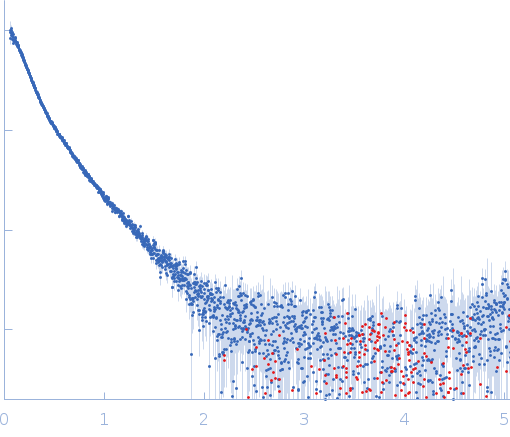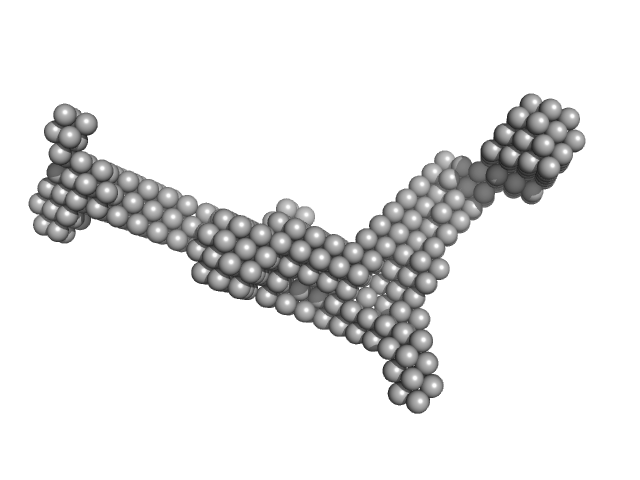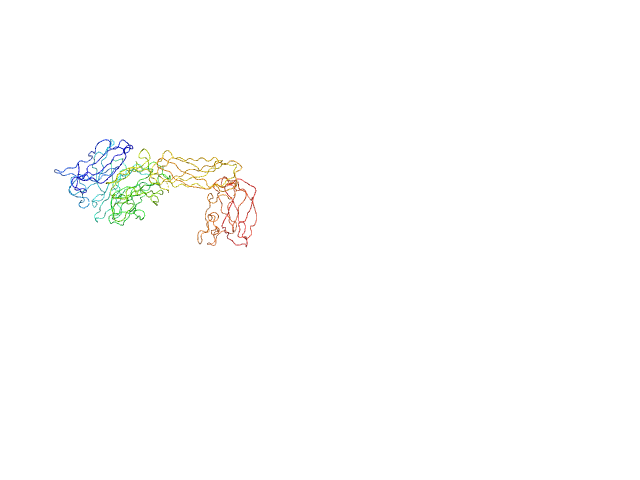| MWexperimental | 242 | kDa |
| MWexpected | 243 | kDa |
| VPorod | 434 | nm3 |
|
log I(s)
6.94×102
6.94×101
6.94×100
6.94×10-1
|
 s, nm-1
s, nm-1
|
|
|
|

|
|

|
|
Synchrotron SAXS
data from solutions of
Tetrameric state of soluble endoglin receptor
in
10 mM Tris–HCl, 50 mM NaCl, pH 8
were collected
on the
EMBL X33 beam line
at the DORIS III, DESY storage ring
(Hamburg, Germany)
using a MAR 345 Image Plate detector
at a sample-detector distance of 2.7 m and
at a wavelength of λ = 0.15 nm
(I(s) vs s, where s = 4πsinθ/λ, and 2θ is the scattering angle).
One solute concentration of 2.05 mg/ml was measured
at 25°C.
Two successive
120 second frames were collected.
The data were normalized to the intensity of the transmitted beam and radially averaged; the scattering of the solvent-blank was subtracted.
Tags:
X33
|
|
|||||||||||||||||||||||||||